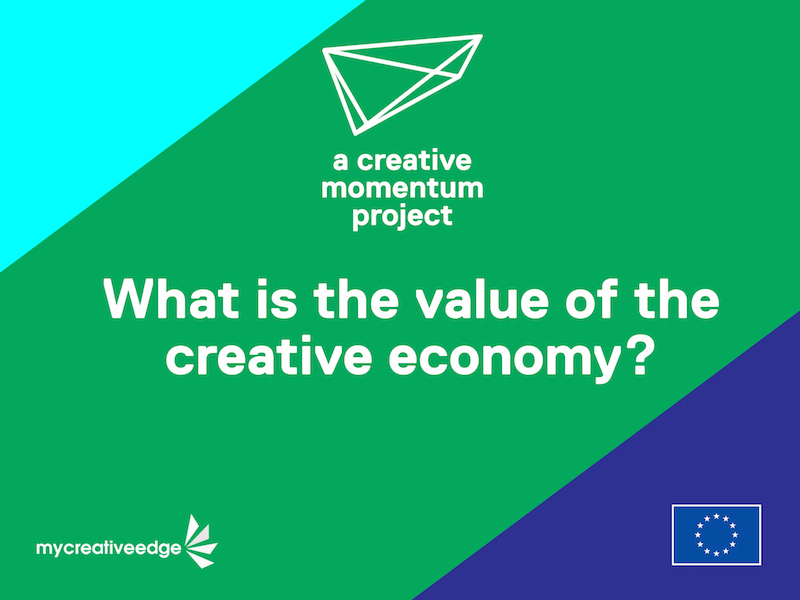A key part of the legacy of a creative momentum project is the evidence developed to shape future creative sector policy and support programmes in the partner regions. As part of the project, National University of Ireland, Galway has worked to analyse the creative sector and prepared a series of policy reports. Here we focus on some of the key messages from two of our reports focused on South East Northern Ireland.
South East Northern Ireland population and economy
The South East Northern Ireland region encompasses three local government districts (LGDs): Armagh City, Banbridge & Craigavon Borough Council; Ards & North Down Borough Council; and Newry Mourne & Down District Council. The region has a population of almost 550,000 with the greatest proportion living in the Armagh City, Banbridge & Craigavon Borough Council area. The economy of the region is dominated by micro and small scale businesses. Analysis by Invest NI shows that on average across the three LGDs 90% of businesses are micro (0-9 employees) and 9% small (10-49 employees) scale. Business numbers and employment is concentrated in the services sector, with the highest concentration in the Ards & North Down Borough Council area.
Creative sector has significant social and economic impacts
To understand the economic and social impacts of the creative sector in the region we surveyed and carried out interviews with creative entrepreneurs. Our survey results suggest the creative sector in South East Northern Ireland consists of a large number of small and micro enterprises. It also appears a relatively young sector with 40% of all operations surveyed in existence less than five years. Our findings suggest the region’s creative sector is strongly embedded in the local economy. The majority of spend by creative sector enterprises on goods and services is local (59%). Sectors that have greater levels of embeddedness in the local economy support stronger regional development because strong internal connections facilitate capturing greater value from the flow of goods and services. Creative sector businesses are also focused strongly on local employment. This observation is supported by our survey findings where the vast majority of labour is locally sourced (83%). Importantly too the creative sector in the region is not just locally focused but also globally engaged. Based on our survey findings from the region it is estimated while 57% of sales occur in the local market, 20% are national and 24% international. Just over two thirds of the creative sector enterprises we surveyed said they exported (67%).
Beyond economic impact the sector also has a range of social benefits. The open and collaborative approach of creative sector entrepreneurs builds a supportive entrepreneurial environment. Creative sector entrepreneurs also engaged with their communities. Our survey showed almost a third (31%) of survey respondents indicated they were involved in voluntary activities that support social and community development. Culture and creativity are also important to attract tourists to the region. Cultural assets attract large numbers of visitors. For example, data sourced from NISRA shows that Slieve Gullion Forest park, which features the children’s art and story trail the Giant’s Lair, attracted 387,936 visitors in 2016.
Support needs to sustain and build future growth
To help support the future development of the creative sector in South East Northern Ireland, a creative momentum project assessed creative sector support needs. To assist the burgeoning creative sector in the South East Northern Ireland region to reach its full potential, a range of creative enterprise support needs emerge to facilitate future development. For example, to facilitate better access to finance we recommend assessment of the potential for a creative enterprise low-cost loan fund. To support creative enterprise sustainability accessing wider markets is important and we suggest a number of strategies to facilitate this. One is supports to build networks in international markets to assist with export development. Another is an examination of the unharnessed potential to develop cross-sector synergies and grant supports to catalyse projects. Better retention and up-skilling of creative talent and attraction of new creative talent to the region is also important so the sector has a strong base of human capital. For existing creative entrepreneurs we argue for the importance of building entrepreneurship skills.
The region also has strengths that can be built upon. Its location between Dublin and Belfast means that creative entrepreneurs in the region can enjoy local quality of life benefits, but also remain connected to cities where markets and creative sector professionals are more concentrated. We argue however that the sector could be supported to become better networked and more visible within the South East Northern Ireland region itself. We identify the need for assessment of the potential and feasibility of a network of new shared creative spaces, such as dedicated creative enterprise co-working hubs or business incubators.
Download the reports below to get the full picture:
Economic and Social Impact Assessment: South East Northern Ireland’s Creative Sector
Creative Sector Supports in South East Northern Ireland: Entrepreneur Perspectives on Future Needs



Discussion
You must be logged in to submit comments.
Add your comments here.
Maximum length of 500 characters